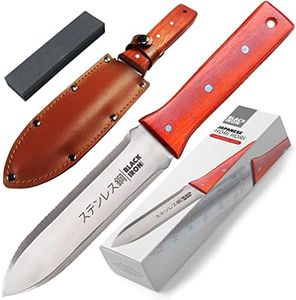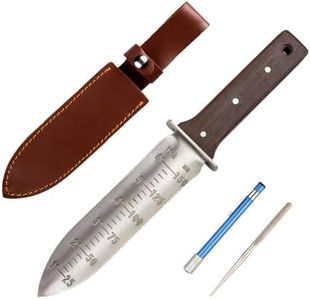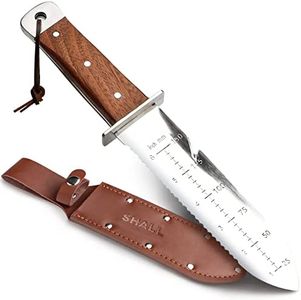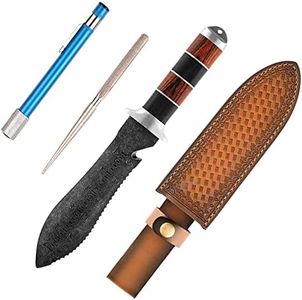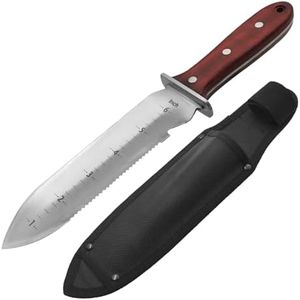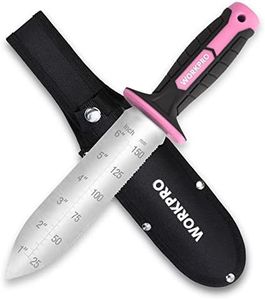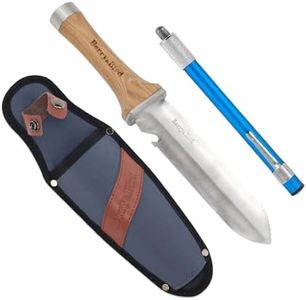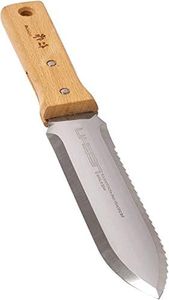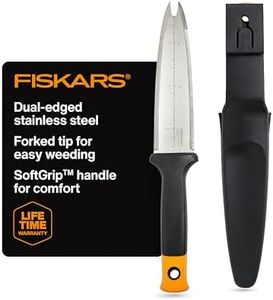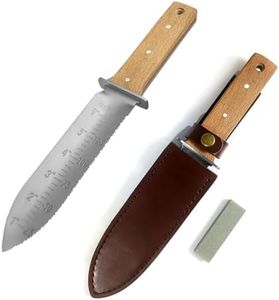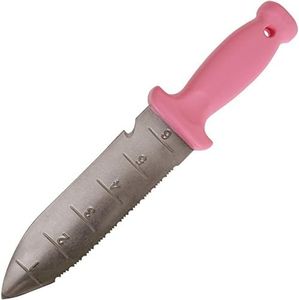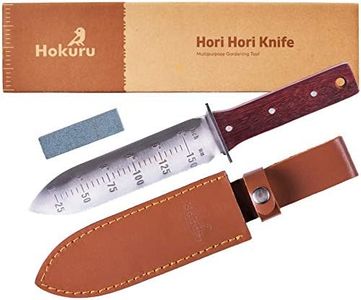We Use CookiesWe use cookies to enhance the security, performance,
functionality and for analytical and promotional activities. By continuing to browse this site you
are agreeing to our privacy policy
10 Best Hori Hori Knife
From leading brands and best sellers available on the web.By clicking on a link to a third party's website, log data is shared with that third party.
Buying Guide for the Best Hori Hori Knife
A hori-hori knife is a versatile gardening tool that combines features of a knife, a saw, and a digging tool. It's prized by gardeners for its ability to handle a range of tasks, from weeding and digging to transplanting and even measuring soil depth. Choosing the right hori-hori knife involves looking at various features to ensure it feels comfortable in your hand, handles the intended tasks efficiently, and is durable enough to last through seasons of use.Blade MaterialThe blade material dictates the durability and sharpness of the knife. Most hori-hori knives come in either stainless steel or carbon steel. Stainless steel resists rust and is easy to maintain, making it suitable if you often leave tools outside or garden in wet conditions. Carbon steel, on the other hand, tends to be sharper and easier to re-sharpen, but it requires more care to prevent rust. If you want a low-maintenance knife, stainless steel may be best, while carbon steel is ideal for those who prefer sharpness and don’t mind upkeep.
Blade LengthBlade length affects how deep you can dig and how well the knife handles different tasks. Typical hori-hori knives have blade lengths ranging from 6 to 7.5 inches. Shorter blades (around 6 inches) are easier to control and ideal for precision tasks like weeding and planting small seedlings. Longer blades (closer to 7.5 inches) allow for deeper digging and are better for heavy-duty work like dividing perennials or digging holes for larger plants. Your choice should depend on the size of the jobs you plan to tackle most often.
Handle DesignThe handle impacts comfort, grip, and safety while using the knife. Handles are usually made of wood, plastic, or rubber. Wooden handles feel natural and comfortable but may need occasional oiling to stay in good condition. Plastic and rubber handles can offer better grip, especially if you're working in wet conditions, but some might feel less sturdy. If you’ll use the knife for extended periods, look for an ergonomic handle that fits well in your hand and minimizes fatigue.
Blade Edge TypeHori-hori knives often feature a combination of straight and serrated edges on the blade. The straight edge is good for slicing through soil and roots, while the serrated edge can saw through tougher materials like roots or small branches. If you expect to tackle a variety of gardening jobs, a blade with both types of edges is versatile. If you'll mostly use it for weeding or simple digging, a plain edge may be sufficient.
Measurement Marks on BladeSome hori-hori knives include engraved measurement marks on the blade, which help in planting bulbs and seeds at the correct depth. This can be particularly useful for precision gardening. If you often plant things that require specific depth, choosing a knife with clear, durable measurement marks can save time and improve accuracy.
Sheath QualityA good sheath makes it safe to store and carry your knife, protects the blade, and keeps it accessible while you work. Sheaths can be made from leather, nylon, or plastic. Leather sheaths tend to be the most durable and attractive but may cost more and require some upkeep. Nylon and plastic are usually lighter and easier to clean. Pick a sheath that is secure and easy to attach to your belt or gardening apron if you want convenience.
WeightThe weight of the knife affects how comfortable it is to use over time. Heavier knives can provide more digging power but may cause fatigue during long gardening sessions. Lighter knives are easier to handle, especially for tasks that require precision. Consider your strength, how long you usually work, and the type of gardening you do most often to decide which weight feels best for you.
